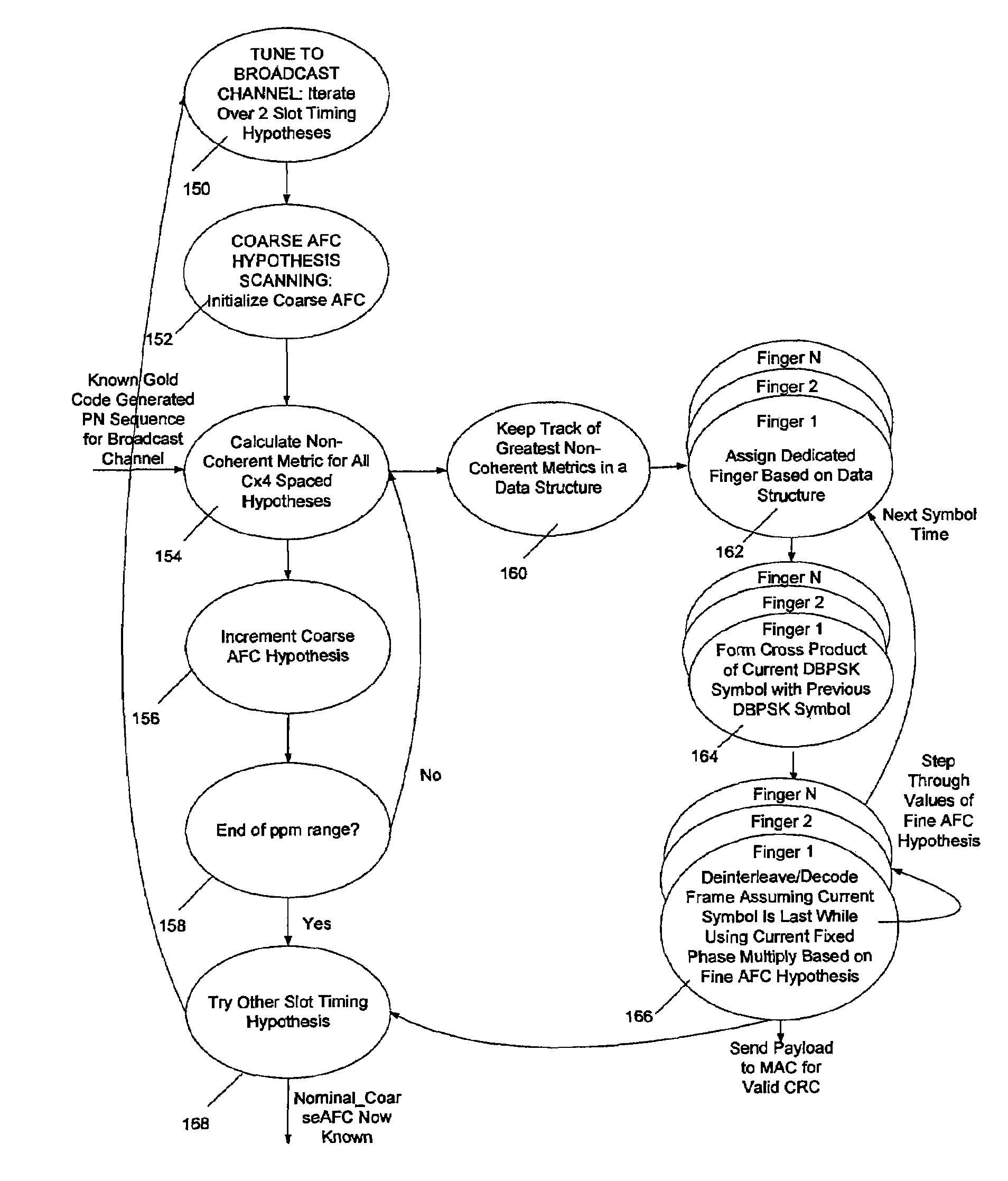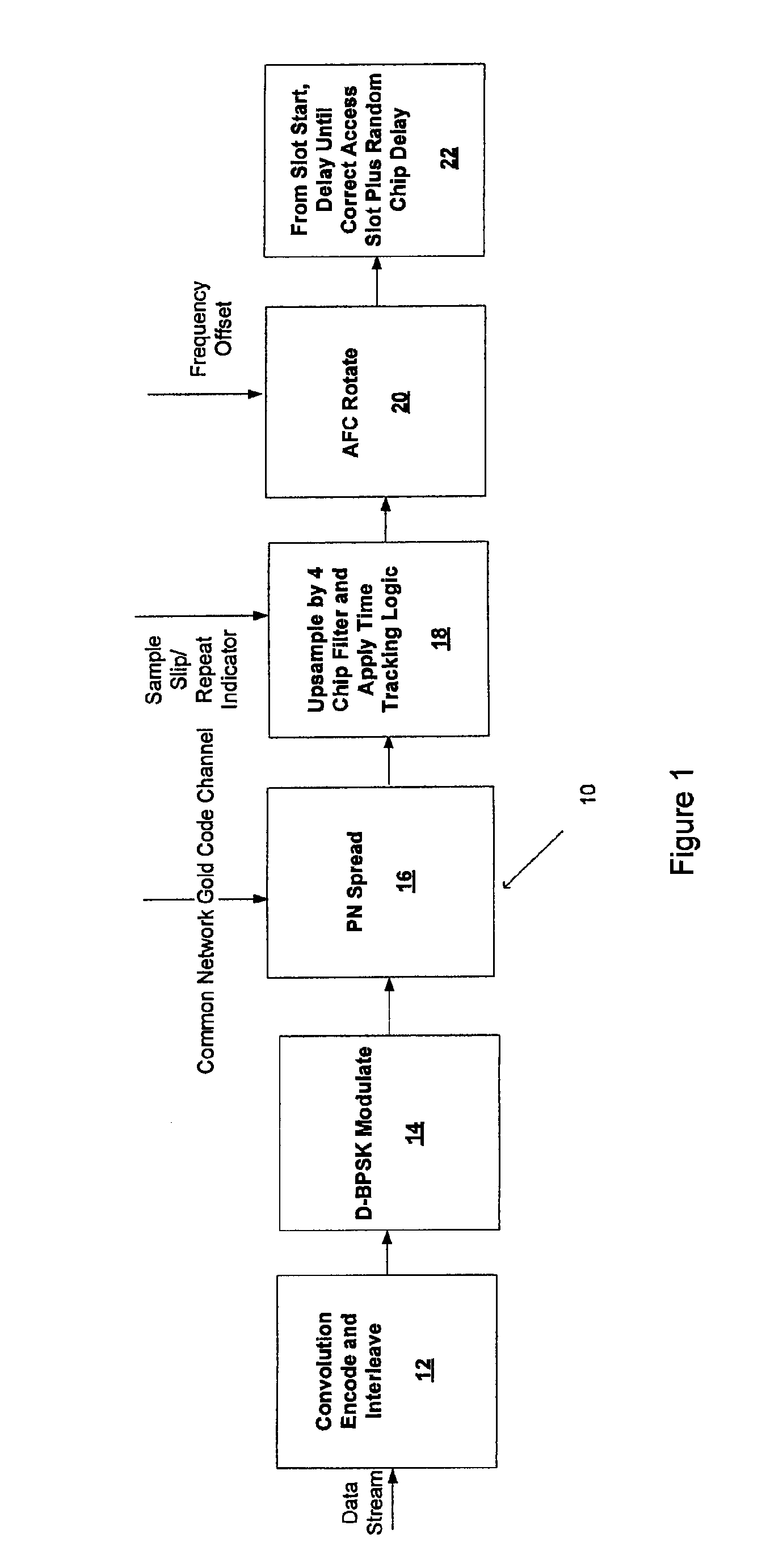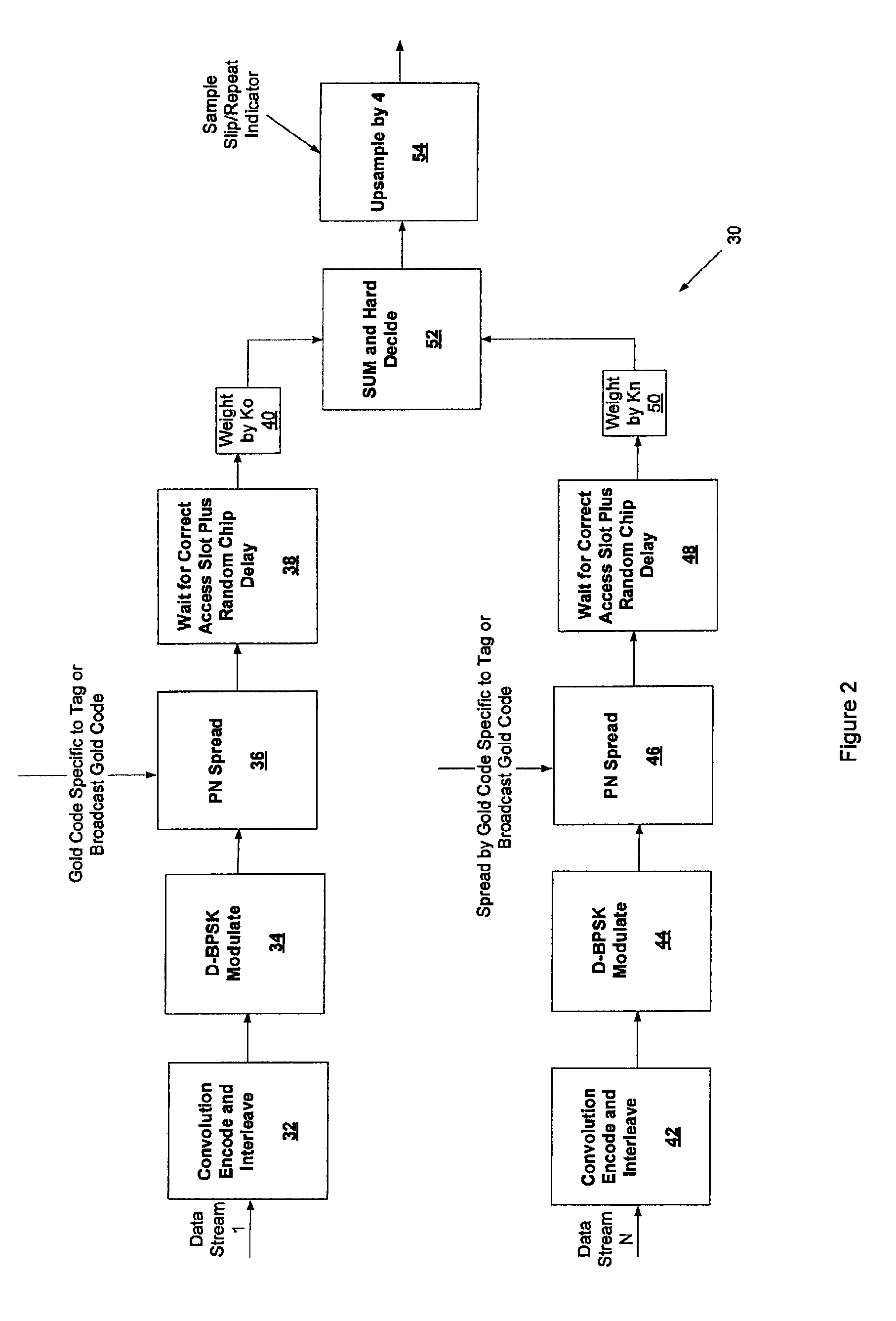Tag communications with access point
a technology of access points and tags, applied in the field of random phase multiple access communication interface systems and methods, can solve the problem of not being able to demodulate these 2 or more signals, and achieve the effects of rapid acquisition, huge computational savings, and improved gate coun
- Summary
- Abstract
- Description
- Claims
- Application Information
AI Technical Summary
Benefits of technology
Problems solved by technology
Method used
Image
Examples
Embodiment Construction
[0037]Exemplary embodiments are described below with reference to the accompanying drawings. It should be understood that the following description is intended to describe exemplary embodiments, and not to limit the invention defined in the appended claims.
[0038]FIG. 1 illustrates an uplink transmitter 10 which includes structures such as a convolution encoder, an interleave module, a modulator, a pseudo-noise spreader, a filter, a bank of taps, an automatic frequency control (AFC) rotator, and other such structures. These structures perform operations depicted in blocks 12, 14, 16, 18, 20, and 22. The transmit path of uplink transmitter 10 is a coded and spread spectrum waveform. In an exemplary embodiment, the uplink transmitter 10 can be included in a tag that communicates with an access point along with other tags using demodulated communication channels. Additional, fewer, or different operations may be performed by the uplink transmitter 10 depending on the particular embodime...
PUM
 Login to View More
Login to View More Abstract
Description
Claims
Application Information
 Login to View More
Login to View More - R&D
- Intellectual Property
- Life Sciences
- Materials
- Tech Scout
- Unparalleled Data Quality
- Higher Quality Content
- 60% Fewer Hallucinations
Browse by: Latest US Patents, China's latest patents, Technical Efficacy Thesaurus, Application Domain, Technology Topic, Popular Technical Reports.
© 2025 PatSnap. All rights reserved.Legal|Privacy policy|Modern Slavery Act Transparency Statement|Sitemap|About US| Contact US: help@patsnap.com



